COLUMNS
LEVELLING
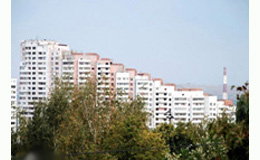
14 December, 2009
Chisinau: the green city
A brief journey to a museum of Modernist urban design 
Moldova is one of the small fragments of Soviet Union, between Romania and Ukraine. With per capita income just 40% of Albania, it is the poorest country of Europe today. Twenty years ago, the contribution of its industry to the GDP was 38%, with products like tractors or spacecraft electronics. Today, industry input has fallen to 20%, with the economy based mainly on agriculture and emigrants.
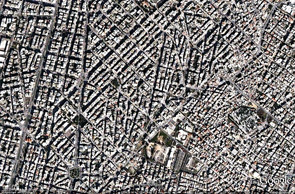
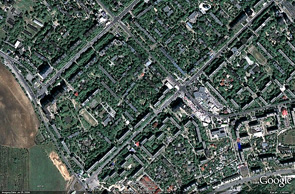
1. Athens & Chisinau from above: same scale, different image.
Unequal densities of course, but who set it up so, and why?
The country’s population is slightly less than Attika’s (<5 million), with one quarter living in the capital, Chisinau or Kishinev. During WW2, the city was repeatedly bombed by the advancing Germans & Romanians, and a little later by the advancing Soviets. On the ruins left by the war, Modernist principles were widely applied: high-rise apartment blocks with small footprint, large open spaces on the ground, wide avenues, and lots of greenery. A similar spirit was adopted during the post-war reconstruction in the rest of Europe, east & west. Today, the plutocratic Globalization which replaced socialist Internationalism, has cast its marks on Kishinev too: glamorous malls, sparkling casinos, nouveau-riche mansions, factories converted into shopping centres. Yet, the urban structure of the city is left intact, as well as basic infrastructure like district heating. The Google Earth image is fairly explicit: about 1/3 of the city looks like a large park with linear buildings amidst vegetation. In fact, Kishinev has one of the highest green ratios in Europe.
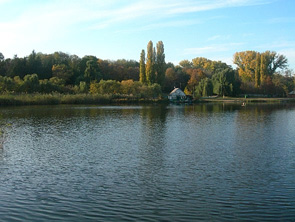
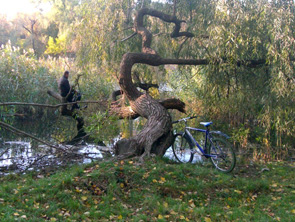
2. Downtown Kishinev, there are 3 artificial lakes covering 9 hectares,
where many go fishing 300m far from multi-storey buildings.
In my first visit to Kishinev last September, I felt a big surprise: I was in a real example of what I had been taught on Urban Design at university, but without having seen it in reality –not to such extend at least. I appreciated the blending of buildings and vegetation, the wide avenues with side streets and dense tree alleys, the comfortable sidewalks, the dominance of greenery. The decline after the defeat, the deterioration, and the neglect, were all too evident, but the basic features of the built space were obvious too: focal points of high density, an overkill of open spaces, buildings freely exposed to the sun and airstreams. I have long experienced the architecture of light-shafts, trashy back-yards, minimal distance required between buildings, 70% footprint ratios, or the right to build on minute plots -in short, the lawful packing of buildings and people. Given that, the new images were impressively different, something like a reversal of Athens.
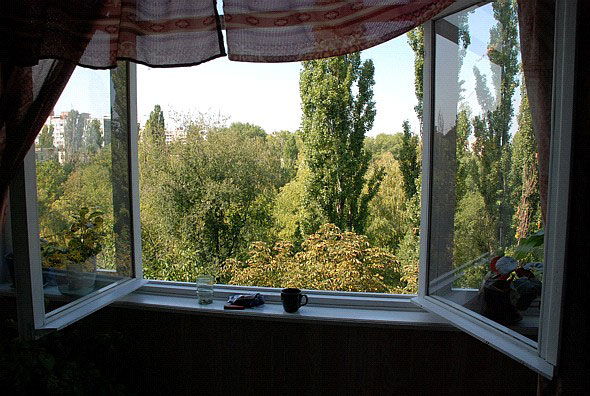
3. View from a 7th floor flat (in Athens we decorate walls with similar pictures).
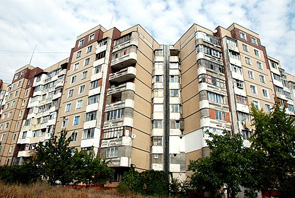
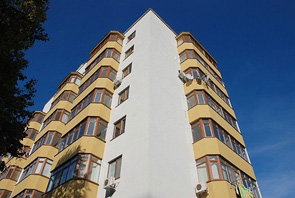
4. Old ‘socialist’ and new ‘capitalist’ apartment blocks: age is the foremost difference.
For 20 years, we have been hearing about “the failure of Modern architecture & urbanism”, about “the alienation caused by socialist blocks that stack people”, about “the lack of liveliness due to the large distance between buildings and the lack of commercial uses”, and similar claims, aiming to justify the over-exploitation of precious private land in our free-market arena. For unclear reasons, it is forgotten that prefabricated multi-story ‘blocks’ housed the masses in the east and the west too, just like it is happening even today in, say, the populous Far East –capitalist and not [see Quiz 2 at the end]. In Europe, the Soviets retained that handy building type for decades, whilst the collective spirit of the West faded away and its people adopted individualistic models, under the influence of ideas like Margaret Thatcher’s who had made clear from 1987 that “There is no such thing as society”.
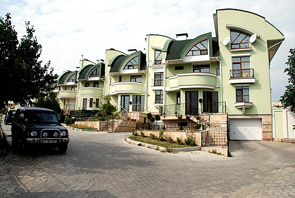
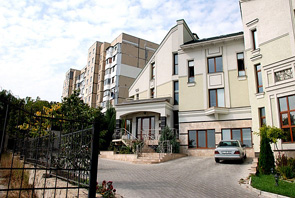
5. Nouveau-riche of the poorest European country opt for 500,000€ mansions
–with secure fencing of course.
I looked for marks of that ‘failure’. I saw poverty, I saw neglect, I saw deserted areas, I saw garbage. That was not a surprise, given that it is a defeated country, overtaken financially even by Albania. However, I also saw many playgrounds and small playfields, I saw laundry drying amongst trees, benches and pergolas, kiosks and small cubicles used as mini-markets and cafés. I saw children –many children- of all ages to play enthusiastically even in the evening, mothers chatting, young couples on benches, grown-ups playing soccer in the afternoon and chess under twilight. “Alienation” and “lack of liveliness” I did not detect.
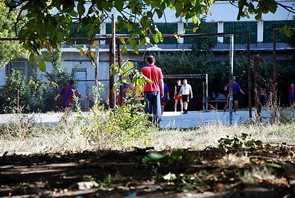
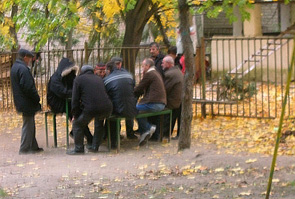
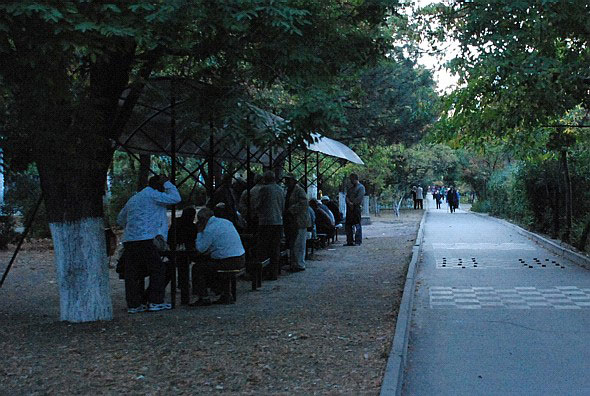
6. Team games of the grown-ups: soccer at noon, domino in the afternoon,
chess at dusk (passion augments lighting).
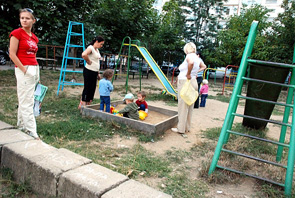
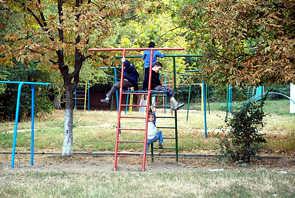
7. Playgrounds: minimal but found everywhere.
I compared what I was witnessing there against the urban setting of ‘rich’ Athens, a metropolis that has spread without a plan, based on sacred small property, and fostered by powerful private interests and widespread illegitimate building practices. I recalled the conditions in dense districts like Kypseli or Patissia, with vegetation beset by concrete, automobiles, and greedy profit. I questioned myself whether our flat-for-land boxes, which stack consumers amidst their cars and confine children between mall playgrounds and video games, are superior to the collective boxes of Kishinev [Quiz 1].
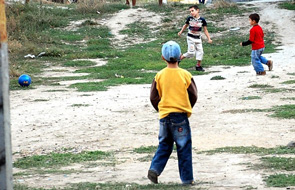
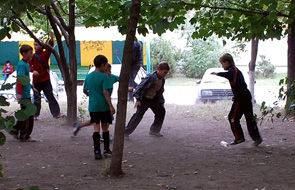
8. If there is enough space and enthusiasm for playing, the ball can be replaced by a plastic bottle!
In this brief travelogue, several findings and interpretations are unavoidably omitted. Nevertheless, what is certain is this: the relationship of people with the public surroundings of their homes that I saw, was more free, more flexible, more versatile, than the one imposed by property demarcation, which fragments open spaces and restricts the collective for the sake of the private. Perhaps what has really happened is not that Modernism has failed, but that the persistent campaign against its ideals has succeeded. That is an interesting topic, on which we should come back.
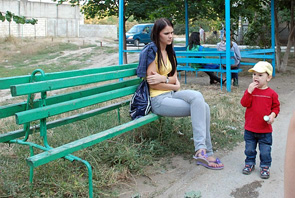
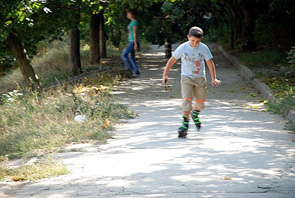
9. The bench is defective but not useless. 10. Neighbourhood alleys facilitate
various forms of fun.
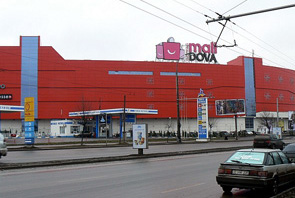

11. ‘malldova’ & ‘streetdova’: consumerist temples are spreading, but not for everybody.
Thanos N. Stasinopoulos
Architect Eng. PhD NTUA, AAGradDipl.
11.12.2009
QUIZ 1: Which view you prefer from your window?
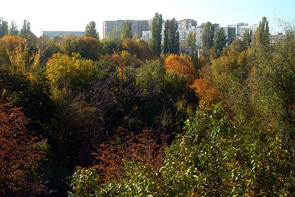

QUIZ 2: Which ‘boxes’ are located in (a) Moldova, (b) USA, (c) Britain, (d) Canada, (e) Singapore ?
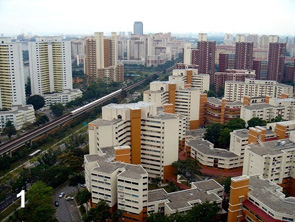
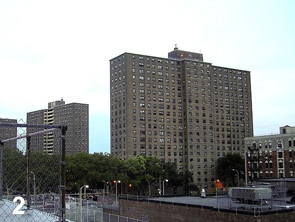
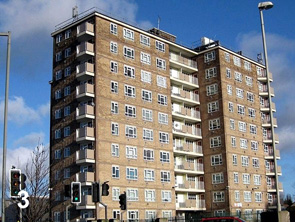
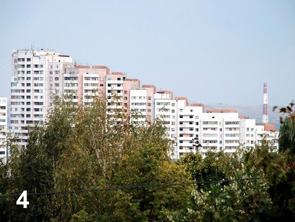
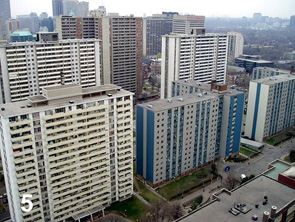
[answer: a-4, b-2, c-3, d-5, e-1]










